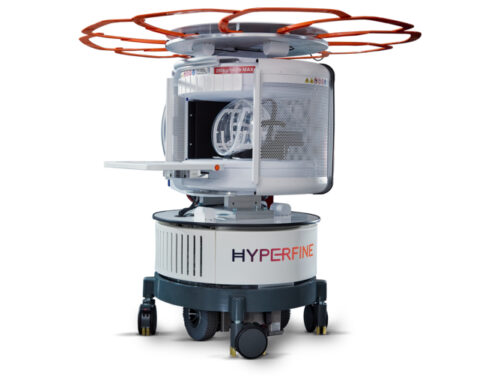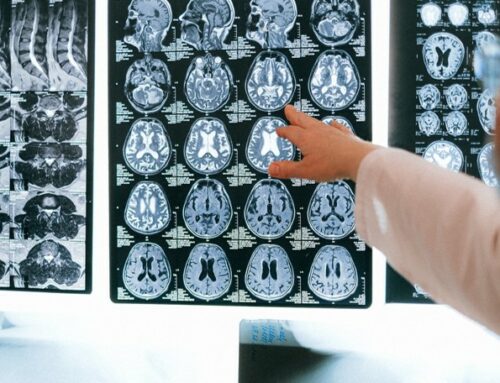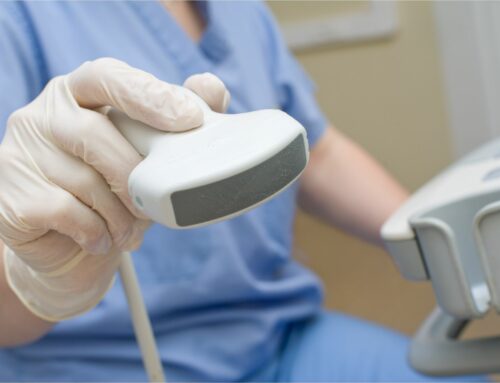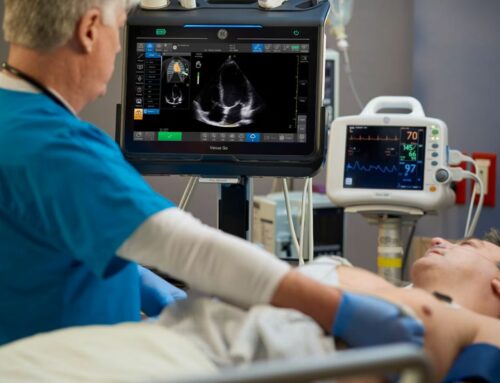By: Mikael Strindlund, CEO at AlgoMedica |
Summary:
Lung cancer screening using low-dose CT scans is the most effective form of imaging for identifying early-stage cancer. American College of Radiology (ACR) guidelines specify that the CTDIvol for lung cancer screening in average-sized patients (170 cm, 70 kg, BMI of 24.1 kg/m2) should be ≤3 mGy, while National Comprehensive Cancer Care Network (NCCN) guidelines suggest an effective dose of ≤3 mSv for patients with BMI ≤30 kg/m2 and ≤5, mSv for patients with BMI >30 kg/m2. Even when following these guidelines, the cumulative effects of repeated radiation exposure may cause irreversible damage, especially for high-risk patients. Studies have found that patient size and orientation, CT scan protocols, and image reconstruction parameters can all affect patient dose exposure. While Iterative Reconstruction (IR) is commonly used to assist in lowering dose, over application of IR does introduce image characteristics which compromise quality. New AI powered image processing tools such as PixelShine® can consistently support imaging at dose levels as low as <1mSv, which is 75% lower than the 3 mSv recommendations set forth by the ACR. This is achieved without sacrificing diagnostic image quality – creating a breakthrough for lung screening programs.
Achieve Dose Reduction Far Beyond Industry Guidelines::
ACR guidelines specify that the CTDIvol for lung cancer screening in average-sized patients (170 cm, 70 kg, BMI of 24.1 kg/m2) should be ≤3 mGy, while the NCCN guidelines suggest an effective dose of ≤3 mSv for patients with BMI ≤30 kg/m2 and ≤5 mSv for patients with BMI >30 kg/m2.
Even when scanning within these guidelines, there is an acknowledged risk that the cumulative effects of repeated x-ray exposure at these levels may cause cell damage and even cancer. Furthermore, patients eligible for low dose lung screening are typically older and often overweight, which can drive higher dose exposure. Therefore, low-dose lung cancer screening protocols must evolve to seek a new ALARA standard so that patients who receive repeat CT screenings are exposed to the absolute lowest risk of the ill effects from the screening exam itself.
However, reducing dose too far produces noisier images, which decreases the diagnostic quality and readability of the resulting images by making it extremely difficult for the radiologist to identify small nodules that may represent early-stage cancer. Low dose lung cancer screening requires high sensitivity and specificity to detect small nodules. With this in mind, programs can be hesitant to pursue lower dose scanning protocols.
While technologies such as Iterative Reconstruction (IR) can help to improve diagnostic image quality at lower dose, there are limitations to how low the dose can go before image quality is compromised. Perhaps the most common image degradation characteristic is a blurring effect that leads to a waxy appearance. Blurry and waxy characteristics are typical of over-applied IR.
Harmonize and Optimize Technologist Workflow:
Since most organizations typically implement their low dose lung cancer screening programs across numerous CT scanners from different manufacturers there is typically variability in the appearance and diagnostic image quality, patient dose delivered, and protocols used. Standardizing these variables across the many scanners is a significant challenge that if addressed can yield value clinical and operational benefits. The opportunity to harmonize image quality and dose across the entire lung cancer screening program is significant and facilitates increased radiologist productivity, clinical confidence, and technologist productivity. Not to mention the most important benefit of all – ensuring that all patients receive the best possible care, at lowest possible radiation dose, regardless of where they go to receive such preventive care.
Consider the Patient Perspective:
Patients have become increasingly aware and sensitive to radiation dose exposure and are concerned about the potential long-term negative effects of radiation exposure. With more information and resources available, to patients, they are actively researching and seeking screening programs that boast the lowest attainable dose exposure. Healthcare organizations that leverage advanced technologies like PixelShine® to harmonize their lung cancer screening program at a dose significantly below industry guidelines can gain a competitive advantage against those who use traditional lung screening protocols. Because PixelShine is a vendor-agnostic solution that works with any CT scanner, independently of make, age and model, it enables all imaging protocols to be consistently adjusted to the lowest attainable dose while improving quality, patient care and productivity across the entire lung screening program.
References:
https://www.uspreventiveservicestaskforce.org/home/getfilebytoken/NaBk7mpgSEmpoBKmK5Qvzn
https://www.cms.gov/medicare-coverage-database/details/nca-decision-memo.aspx?NCAId=274












